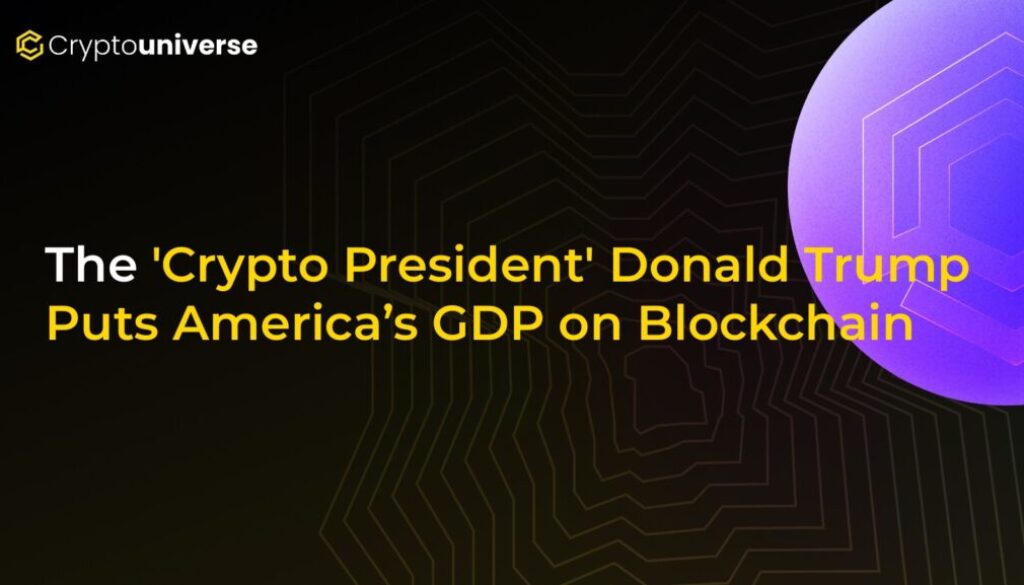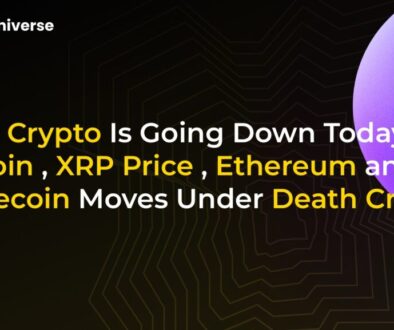The ‘Crypto President’ Donald Trump Puts America’s GDP on Blockchain

A New Digital Dawn for the American Economy
In a move that has sent shockwaves through both Washington and the world of digital finance, President Donald Trump has unveiled his most audacious economic plan to date: a sweeping initiative to tokenize and track the Gross Domestic Product (GDP) of the United States on a proprietary blockchain. The announcement, delivered from the Oval Office, marks a pivotal moment in the nation’s history, cementing Trump’s legacy as the first true <'Crypto President' Donald Trump Puts America’s GDP on Blockchain>.
This groundbreaking project, dubbed the “American Ledger Initiative,” aims to create a transparent, real-time, and immutable record of the country’s economic output. Proponents hail it as a masterstroke of modernization that will enhance efficiency and accountability, while critics warn of unprecedented surveillance and centralization of power. What does this monumental shift truly mean for the future of the American economy?
Why Put an Entire Economy on the Blockchain?
The administration has outlined several key motivations behind this unprecedented move. Far from being a mere technological experiment, the American Ledger Initiative is being framed as a cornerstone of Trump’s second-term economic policy.
1. Unprecedented Transparency and Anti-Corruption
At its core, the initiative promises to bring radical transparency to government spending and economic activity. By recording transactions on an immutable distributed ledger, the administration claims it can drastically reduce fraud, waste, and corruption. Every dollar spent from the federal budget could, in theory, be tracked from allocation to final destination, creating a new standard of public accountability.
2. Economic Warfare and National Security
In an increasingly digital world, economic data is a primary target for foreign adversaries. By moving critical economic infrastructure to a secure, decentralized blockchain, the White House argues it is fortifying the U.S. economy against cyber-attacks and manipulation. This is being pitched as a 21st-century defense strategy, protecting America’s financial sovereignty.
3. Reining in the Federal Reserve
President Trump has long been a vocal critic of the Federal Reserve. This initiative can be seen as a direct challenge to the central bank’s authority. A blockchain-based system, potentially integrated with a U.S. digital dollar (CBDC), would provide the executive branch with a real-time view and potentially greater control over the money supply, bypassing traditional financial intermediaries.
The Technical Blueprint: How Would It Work?
While the full technical details remain classified, sources inside the administration have leaked a general framework for how the American Ledger would function. The plan appears to be a multi-layered approach combining tokenization, smart contracts, and a new digital currency.
- Tokenization of Economic Output: Key sectors of the economy, from manufacturing output to intellectual property rights and agricultural goods, would be represented as digital tokens on the blockchain. This would allow for fractional ownership and more liquid markets.
- A Fed-Backed Digital Dollar: The system would likely run on a new U.S. CBDC, or a fully-backed and regulated stablecoin. This digital dollar would be the primary medium of exchange for all government transactions, and eventually, for the broader economy.
- Smart Contracts for Bureaucracy: Government processes like tax collection, social security payments, and regulatory compliance could be automated using smart contracts. This would dramatically increase efficiency, reduce paperwork, and minimize human error.
- Public-Private Partnerships: The project would involve collaboration with leading American blockchain and tech companies to build out the infrastructure, ensuring the U.S. remains at the forefront of financial technology innovation.
The Ripple Effect: What This Means for You and the World
The implications of putting the world’s largest economy on a blockchain are staggering and will be felt by everyone.
For the Average Citizen: This could mean faster receipt of government benefits, more transparent tax processes, and potentially new ways to invest in the American economy. However, it also raises significant privacy concerns, as every financial transaction could become part of a government-controlled ledger.
For Businesses: Companies could benefit from streamlined regulatory reporting and faster cross-border payments. The tokenization of assets could also unlock new forms of capital formation and investment, fueling economic growth.
For the Global Financial System: A blockchain-powered U.S. dollar could reinforce its dominance as the world’s reserve currency, offering unparalleled efficiency and security. Conversely, it could also spur other nations like China to accelerate their own digital currency projects, leading to a new kind of global economic competition.
Challenges and Criticisms: The Road Ahead is Not Smooth
Despite the bold vision, the American Ledger Initiative faces immense hurdles. Privacy advocates are sounding the alarm over the potential for a dystopian surveillance state where the government has a complete view of every citizen’s financial life. There are also massive technical challenges related to scalability, security, and ensuring a seamless transition from the legacy financial system. Furthermore, expect fierce political opposition from the traditional banking sector, civil liberties groups, and rival political parties who view the project as a dangerous overreach of executive power.
A New Economic Frontier or a Digital Dictatorship?
President Trump’s decision to put the U.S. GDP on a blockchain is more than just a policy change; it’s a paradigm shift. It represents the ultimate fusion of political power and cutting-edge technology. Whether this leads to an era of unprecedented prosperity and transparency or a future of centralized control remains to be seen. One thing is certain: the world is watching, and the rules of the global economy may never be the same again.


